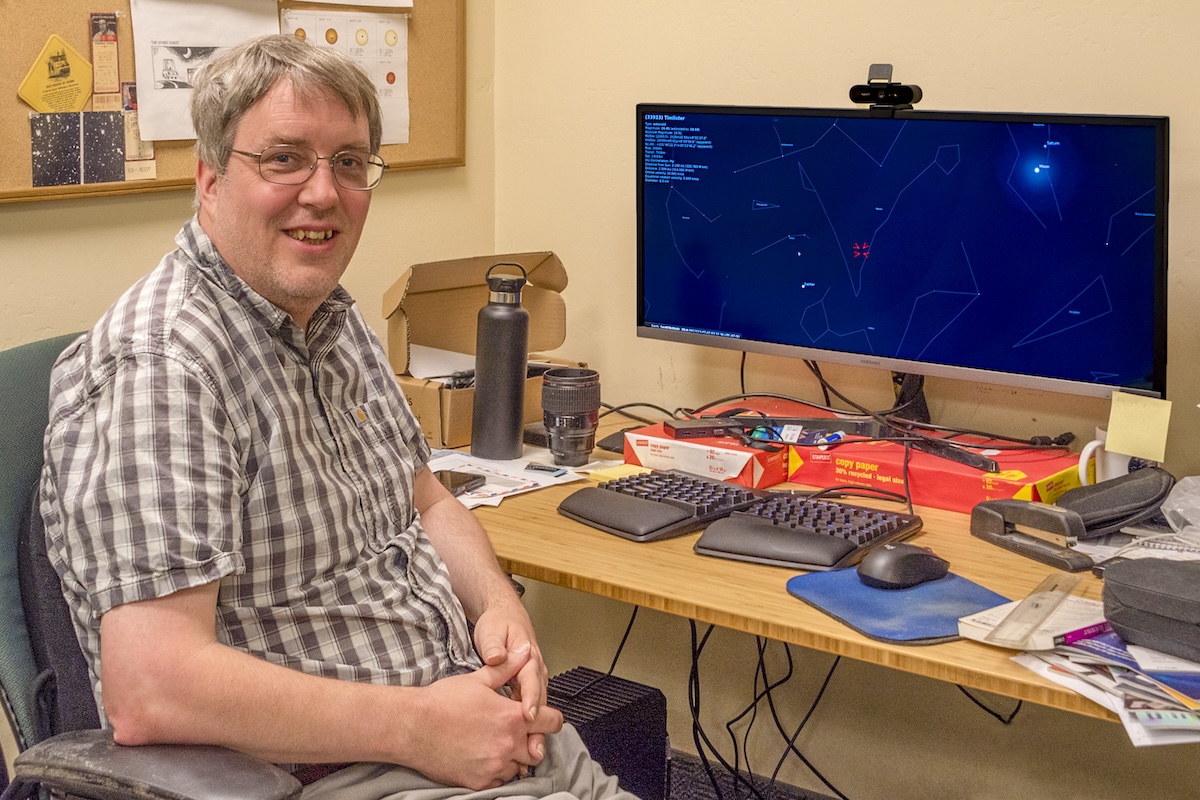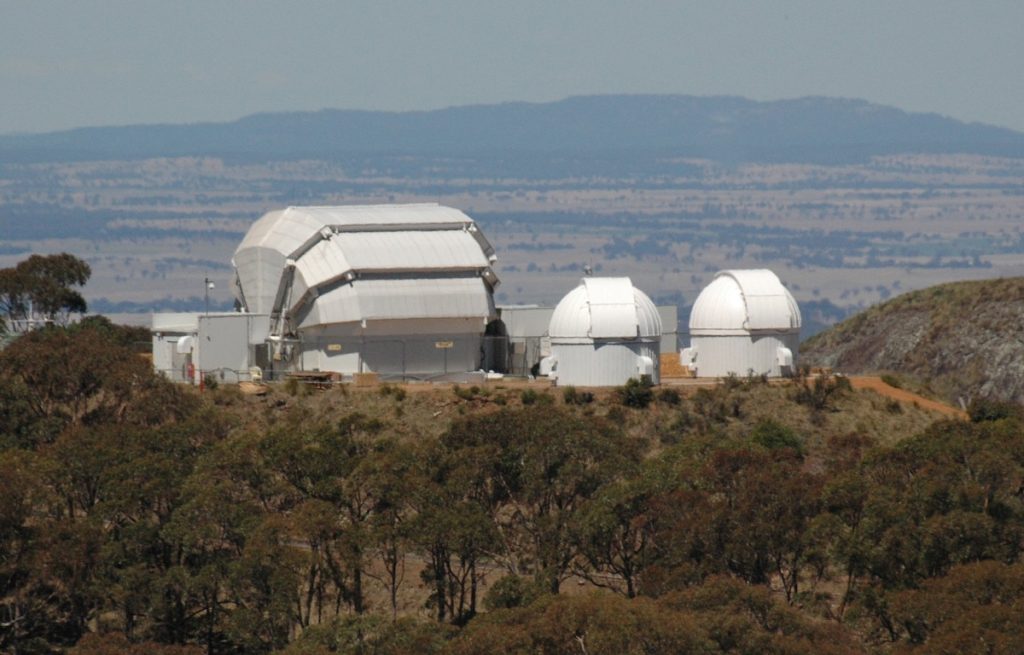Tim Lister Awarded NASA Grant for the ESA’s Hera Mission

Tim Lister PhD, Senior Scientist at the Las Cumbres Observatory, Goleta, has been awarded a grant from NASA to join the European Space Agency’s Hera Mission, as one of 12 U.S. participating scientists.
On September 26, 2022, the world’s first planetary defense test mission was carried out by NASA’s Double Asteroid Redirection Test (DART). In the test, a spacecraft impacted Dimorphos, the smaller secondary (approximately 500-foot diameter) asteroid of the near-Earth object binary system (65803) Didymos. That impact successfully changed the orbital period of Dimorphos.
Lister led the observations of the DART mission, part one of the Asteroid Impact and Deflection Assessment collaboration between NASA and the ESA. His team utilized the LCO telescope global network, captured the impact, and continued observations with data collection through March 2023. His findings were published in The Planetary Science Journal, May 31, 2024. In 2023, he was honored for his work with having an asteroid named after him [See MJ Vol. 29 Issue 29, July 20-27, 2023].
The ESA Hera mission is part two of the collaboration. Hera is scheduled to launch on a SpaceX Falcon-9 rocket in October 2024, and rendezvous with Dimorphos in October 2026, to begin a six-month investigation. Hera will carry 12 instruments, including two CubeSats [like drones] and a radio science experiment.
Lister and his team will use the LCO 2-meter Faulkes Telescope South at Siding Spring Observatory, New South Wales, Australia. Its multi-channel imager will measure light curves to determine whether the DART-induced change in Dimorphos’s orbit time has remained constant or changed, and whether the impact caused wobbling or tumbling in its orbit.
I met with Lister at the LCO offices for an interview:
Q. What will you do for the Hera Mission?
A. NASA has participating science programs for missions not being done by NASA, and it puts out a call for participating scientists to apply for them. I put in a proposal saying what I wanted to do for the Hera mission. Hera has a science team already of European and International scientists. When you apply, you have to demonstrate that you’re adding something in terms of a resource or expertise. In our case it’s the LCO telescopes to make observations of the asteroid. LCO was very fortunate to be part of the DART mission.
For Hera, we have a large 2-meter telescope in the southern hemisphere in Australia where the asteroid is at the moment. We are making observations of the asteroid for the first time since the DART mission finished, and before Hera launches and rendezvous with the asteroid. That information increases our knowledge of the Didymos system and feeds into the Hera Mission planning.
We are making these new observations in June, July, and August 2024, as it has come back close to Earth. There will be another opportunity in 2026 when it comes close to Earth again. We are going to be doing what we did for DART, measuring the brightness of the asteroids in their orbit, checking if Dimorphos stayed in its new orbit from the DART impact, and if Dimorphos is wobbling in its orbit.

What is the time frame of the mission for you?
Five years in total. When we launched DART, it was a very fortuitous alignment of the Earth and the asteroid, so a quick 10-month travel time, and Didymos was very bright.
For Hera, not as fortunate. Hera will launch on a SpaceX Falcon-9 rocket from Florida this October 7th, but it will take till October 2026 to get there. It will launch the two CubeSats and then go into orbit around the asteroid system and stay there for six months making observations.
What data do you hope to find?
LCO is to first make new measurements of the orbital period since we stopped in March 2023. DART changed the asteroid orbit by 33 minutes. As we have not been able to look at the asteroid since March 2023, we want to know if that has stayed as such or changed. The most favored expectation is the asteroid will probably stay at the same orbit period from DART, and that DART changed the shape of the asteroid, and likely set it wobbling like a badly thrown football.
With DART we only saw one side of the asteroid and the view smashing into it.
Hera will provide detailed information from both sides of the asteroid. To predict our next direction, we need a model of its full shape, weight, what it is made of, and the deflection of it by DART.
Who is in charge of defense for Earth from any incoming asteroids?
The goal is we are trying to protect the whole planet. It is an international project, so naturally any attempt at deflection has to be an international effort.
The 2023 Near-Earth Object Preparedness Plan sets what we are doing to find these things, what would happen if we found an incoming asteroid that posed a risk, and what we might potentially do about it.
NASA established the Planetary Defense Coordination Office in 2016 to oversee planetary defense efforts such as DART, and surveying and characterizing Near-Earth asteroids.
The United Nations Office of Outer Space Affairs endorsed the creation of IAWN [International Asteroid Warning Network] and SMPAG [Space Mission Planning Advisory Group]. LCO is part of IAWN.
Small asteroid impacts are more like a local civil defense issue similar to hurricanes. For very large asteroids, it has been discussed to use a nuclear explosive device to deflect the asteroid. People in general are not very keen on that but it remains a possible option if we needed it.
411: https://lco.global/news/lco-scientist-tim-lister-wins-major-award-from-nasa/







You must be logged in to post a comment.